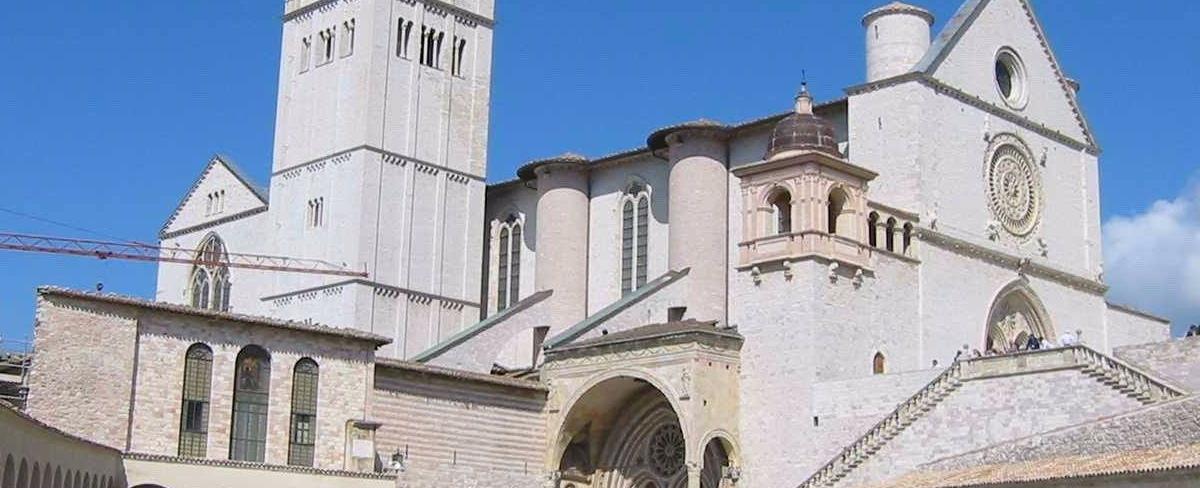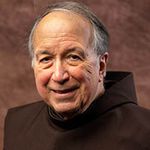Dedication of the Basilica of San Francisco in Assisi

On May 24, the Franciscan Family celebrates the feast of the Dedication of the Basilica of San Francesco in Assisi.
Launching cause for canonization of Saint Francis
Francis died in October 1226. His friend and protector, Cardinal Hugolino, was elected Pope Gregory IX in March 1227 and quickly launched a process for Francis’s canonization.
Constructing a pilgrimage house for Francis’s remains
Meanwhile, Gregory made plans to construct a pilgrimage church to house Francis’s remains. The commune of Assisi donated land, and at the end of April 1228, the Pope sent out an appeal to the Christian people requesting funds for the project. On July 17, 1228, the day after Francis’s canonization, Gregory laid the cornerstone of the church.
Construction progresses rapidly
Among the chief benefactors of the work was Lady Jacopa di Settisoli, a prominent Roman noblewoman and lay penitent, who was a close friend of Francis. Supervision of the construction was entrusted to another of Francis’s close friends, Brother Elias. Work progressed so rapidly that the lower church was ready to receive Francis’s body on May 25, 1230, during the general chapter of the Order.

The nave of the upper basilica
Frescoing the basilica
Work on the upper church then commenced, and both churches were consecrated by Pope Innocent IV in May 1253, a remarkable achievement for the time. Innocent called for the church to be decorated with “the peak of splendid workmanship. . .,” but it was not until the 1260s that the work of frescoing the basilica began in earnest; this project, which took place over the next century, produced the magnificent art work so admired today.
Viewing images of basilica’s major frescoes
Discussion continues among art historians as to which artists are responsible for the different frescoes. The following link provides images of the major frescoes in both the upper and lower churches: https://www.wga.hu/html_m/g/giotto/assisi/index.html.
Discovering Francis’s tomb
In 1754 Pope Benedict XIV raised the church of San Francesco to the rank of a papal basilica. In 1818 the tomb of St. Francis was discovered under the main altar of the lower church, and a crypt chapel was then constructed beneath it to allow pilgrims access to venerate Francis’s actual resting place.

The tomb of Saint Francis in the crypt
Restoring the basilica after earthquake
A major earthquake in 1997 caused extensive damage to the upper basilica, the vault of which crumbled in two points, and to the tympanum of the transept, destroying some of the frescoes there. Restoration works began immediately after the catastrophe.
Welcoming countless pilgrims
This magnificent church remains a treasured place of pilgrimage for countless people who wish to pray at Francis’s tomb and admire the inspiring works of art it contains. May all these visitors be blessed!
See the Basilica of Saint Francis live at this moment.

View from the Assisi valley of the basilica and the sacro convento and other buildings in the complex
-----
Main image: Approaching the Basilica of San Francesco’s pilgrim reception area. The doors under the large round arch in the center of the photo give access to the lower basilica; the upper basilica is accessed via the staircase to the right.
Dominic Monti, OFM
Professor of Franciscan Research in the Franciscan Institute of St. Bonaventure University
Dominic V. Monti, OFM, is a Franciscan Friar of Holy Name Province (USA) and currently professor of Franciscan Research in the Franciscan Institute of St. Bonaventure University. He devoted the greater part of his ministry to teaching the History of Christianity, in particular the history of the Franciscan movement. He has contributed two volumes to the Works of St. Bonaventure series and is author of Francis & His Brothers, a popular history of the Friars Minor.

